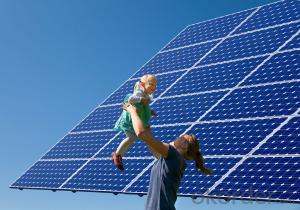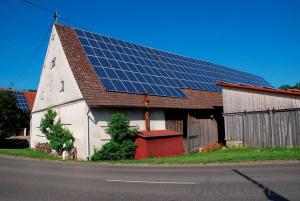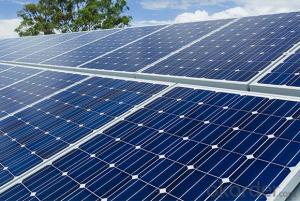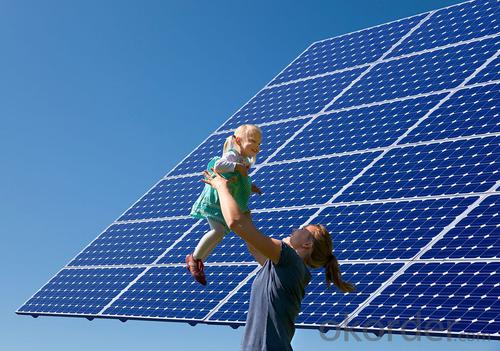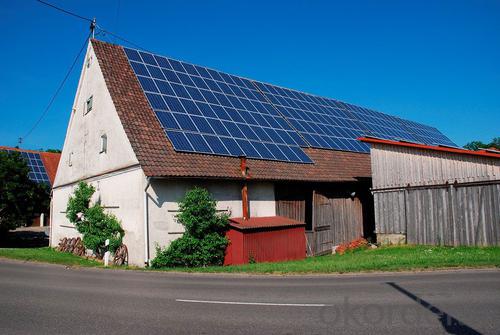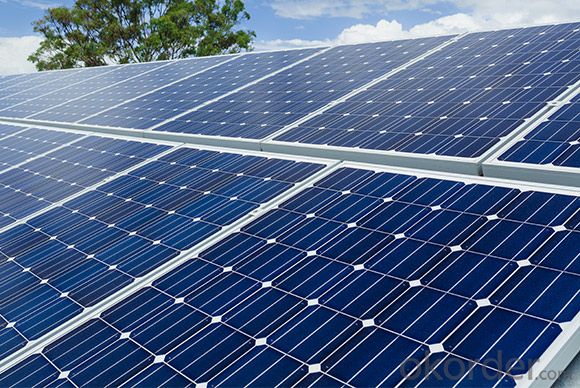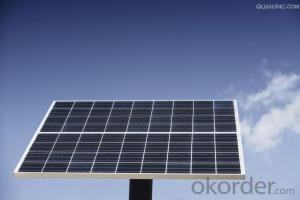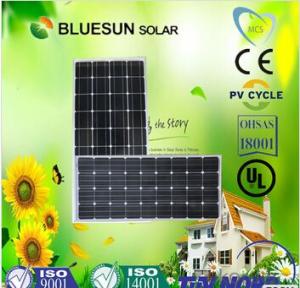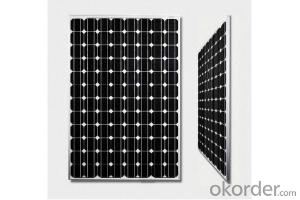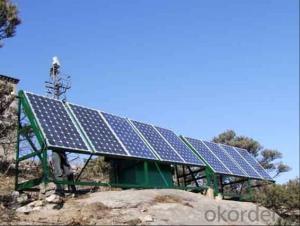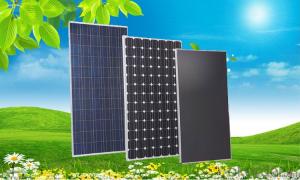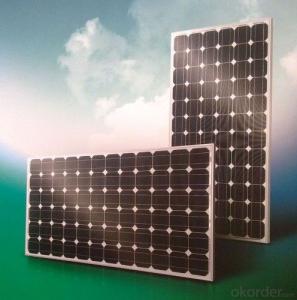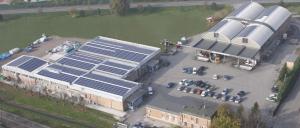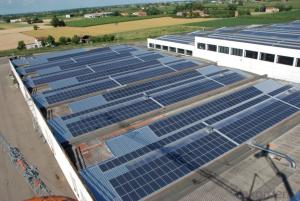Most Efficient CNBM Solar Monocrystalline 156 Series (70-80w) 2023
- Loading Port:
- China main port
- Payment Terms:
- TT OR LC
- Min Order Qty:
- 100000 watt
- Supply Capability:
- 10000000 watt/month
OKorder Service Pledge
OKorder Financial Service
You Might Also Like
Introduction
This installation Manual contains essential information for the electrical and mechanical installation that your must know before installing CUSTOMER PV modules. This also contains safety information you need to be familiar with .All the information described in this manual are the intellectual property of CNBM and based on the technologies and experiences that have been acquired and accumulated in the long history of CUSTOMER. This document does not constitute a warranty, expressed or implied.
CUSTOMER does not assume responsibility and expressly disclaims liability for loss, damage, or expense arising out of in anyway connected with installation, operation, use or maintenance of the PV modules. No responsibility is assumed by CUSTOMER for any infringement of patents or other rights of third parties that may result from use of PV module.
CUSTOMER reserves the right to make changes to the product, specifications or installation manual without prior notice.
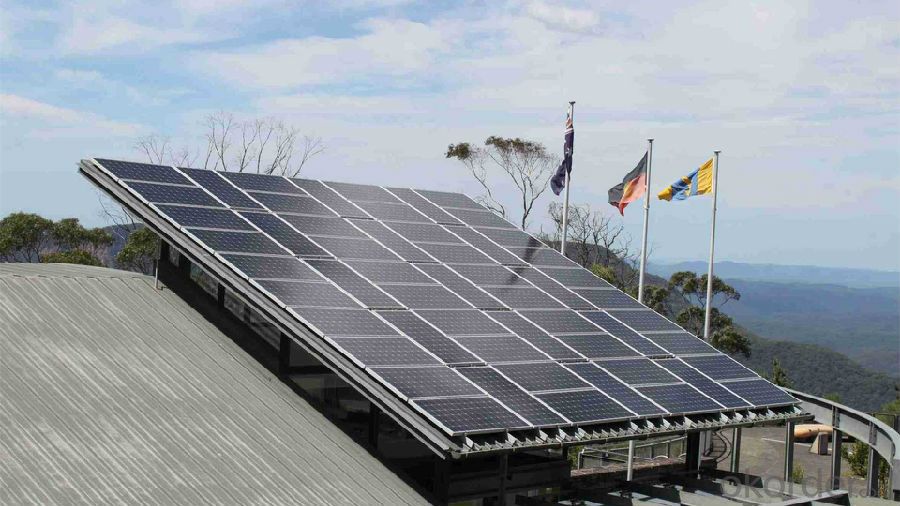
Data sheet
| Characteristics | |
| Max Power Voltage Vmp (V) | 17.2V-17.4V-17.6V |
| Max Power Current Imp (A) | 4.07A-4.32A-4.55A |
| Open Circuit Voltage Voc (V) | 22.2V-22.4V-22.6V |
| Short Circuit Current Isc (A) | 4.35A-4.61A-4.87A |
| Max Power Pm (W) | 70W-75W-80W |
| Temperature Coefficient of Cells | |
| NOCT | 47℃±2℃ |
| Temperature Coefficients of Isc (%/℃) | 0.06% |
| Temperature Coefficients of Voc (%/℃) | -0.32% |
| Temperature Coefficients of Pmp (%/℃) | -0.45% |
| Mechanical Data | |
| Type of Cells (mm) | Mono156*78 Mono156*39 |
| Dimension | 780×670×30mm |
| Weight | 5.9kg |
| NO.of Cells and Connections | 4×9=36/4*18=72 |
| Limits | |
| Operating Temperature | –45°C to +80°C |
| Storage Temperature | –45°C to +80°C |
| Max System Voltage | 700V |
Guarantee
Products Guarantee 2 yrs free from defects in materials and workmanship
Performance Guarantee No less than 90% within 10yrs and no less than 80% within 20yrs Certificates IEC, ISO, CE
FAQ:
1. How long will my inquiry get response?
Your inquiry related to our products or prices will be replied within 24 hours.
2. Can I get professional service and suggestion?
Well-trained and experienced staffs to answer all your questions in fluent English.
3. Do you accept OEM or customized design?
OEM & ODM, any your customized lightings we can help you to design and put into product.
4. What if I need specific design?
Distributorship are offered for your unique design and some our current models.
- Q: Hello Yahoo, I am doing another one of my wacky inventions however I need something that will give me 2V of power!I don't want to connect loads of AA batteries into a battery holder as this shall run out quickly and become expensive in the long run, I don't want to carry around a big car battery either.I have been searching around on OKorder .uk and found some Solar-Powered 2V Trickle Chargers. These say they shall work on cloudy days (which is perfect as the majority of the time that is all we get!) but could I use it as an independent power source?If I attached the thing I want to run to the solar panel will it supply it with 2V of power?
- If you want to run something from a solar panel, you should remember that the power from the panel is only available when there is reasonable sunshine on the panel. Usually the solar panels are used with solar regulators in order to charge batteries. These batteries are used as energy storage for when the sun is not shining. Now, this does not mean that you cannot drive instruments directly from the solar panel and regulator. To do this, you will need a panel that has sufficient power to drive your instrument. An example is the solar powered garden or fountain pumps. I have driven 2V computer fans directly from the small solar panels - useful for cooling of things such as pool pump housings. The solar regulator is used to convert the solar panel output to a 3.5V output in order to charge lead acid batteries. I have used MPPT regulators (maximum power point tracking) which is more efficient than the standard solar regulator. If you don't use these regulators you may find the solar panel producing up to 7-9V in good sunshine which is not good for your instruments that are expecting 2-3V. Hence the answer to your question is that you will need to have a battery being charged to get useful power from the solar panels via a solar regulator.
- Q: I know that there is a life expectancy for solar panels, and I suppose, the technology involved. Any information?
- This Site Might Help You. RE: how long do roof solar panels last? I know that there is a life expectancy for solar panels, and I suppose, the technology involved. Any information?
- Q: Can solar panels be integrated into building materials?
- Yes, solar panels can be integrated into building materials. This innovative approach, known as building-integrated photovoltaics (BIPV), allows solar panels to be seamlessly incorporated into various architectural elements such as roofs, facades, windows, and even entire building structures. BIPV offers a dual function by serving as both a source of renewable energy and a structural component, enabling buildings to generate sustainable electricity while maintaining aesthetic appeal.
- Q: What are the financial benefits of installing solar panels?
- Installing solar panels can provide numerous financial benefits. Firstly, solar panels can significantly reduce or eliminate monthly electricity bills as they generate free and sustainable electricity from the sun. This can result in substantial long-term savings, especially in areas with high electricity rates. Moreover, solar panels often have a long lifespan, making them a worthwhile investment. Additionally, many governments and utility companies offer financial incentives such as tax credits, rebates, and net metering programs, further reducing the upfront cost and maximizing the financial return. Lastly, solar panels can increase the value of a property, making it more attractive to potential buyers and potentially yielding a higher resale value. Overall, by installing solar panels, individuals can save money, increase their property value, and contribute to a more sustainable future.
- Q: If my school uses 88240kWh of electricity per month and I have 000 50W solar panels running for 6 hours a day, does it mean it will take 88240kWh / {{[(50W x 3600s)*000]/000}kWh x 6} number of hours to generate that much electricity (88240kWh)?
- your first question: Does a 50W solar panel generate 540kWh? 540 kW-hr / 50W = 3600 hours it would take that long for the panel to generate that amount of energy. your second question is confused, as you both stipulate the number of hours at 6 hours per day, and you try to solve for the number of hours. 000 x 50w = 50 kW 50 kW x 6 hr/day x 30 day/mo = 27000 kW-hr/mo = 27 MW-hr/mo that is the amount of energy generated. That is nowhere close to 88240 kWh or 88 MW-hr. I would take 7 times more solar panels to generate that much energy. .
- Q: I need a new roof soon and I was wondering what the difference in cost would be from a standard shingle roof to a roof including solar panels. Does anyone know the cost difference?
- The solar panels are very expensive to provide much power. If u go that way do not skimp on the support as a high wind will blow them away. In Ecuador I put in a remote site for communications. It was working good when a Strong wind blew $0.000 worth of solar panels all over the jungle.
- Q: Can solar panels be installed on concert venues or music festivals?
- Yes, solar panels can be installed on concert venues or music festivals. In fact, many venues and festivals are increasingly adopting solar power as a sustainable and renewable energy source. Solar panels can be installed on roofs, canopies, or even on the ground surrounding the venue, providing clean energy to power the event and reduce its carbon footprint.
- Q: Can someone tell me if I can run a air conditioner off solar panel?I have a ET-P65420 20Wp solar panel. What do I need to make it work? I am told I will need a Enphase Energy Microinverter M20. Is that true? I am looking to run a 5000 to 8000btu air conditioner to a max of 0000btu air conditioner. I need to cool a 0x30 space. One time I read, I need total watts of panel to match total watts of air conditioner. Then I read, that I do not and can run more watts then what the panel is depending on the inverter and batteries.Can someone tell me what and how to make this work please? More panes or inverter and batteries?
- You can expect such an air conditioner to use something like 500 - 800 watts of power. The ET-P65420 20Wp solar panel produces at most 20 watts so you will need at least three of them. Since solar cells make DC (Direct Current) electricity, and air conditioners use Alternating Current (AC) electricity, you do need an inverter. The M20 is a 220 volt inverter, and I suspect you are looking at a window air conditioner that will probably use 0 volt power. And the M20 only puts out a maximum of 240 watts so you need one for each of the 3 or more solar panels you will have to use. So the first thing to do is shop for air conditioners, getting the most energy efficient model you can find, paying close attention to the voltage and wattage ratings in the owner's manual or on the UL label on the back. Say it is a 500 watt, 0V unit. You will need three solar panels and three 0 volt model inverters. Also note that the 20 watt rating of the solar panels if when the panel is facing DIRECTLY at the Sun. If you just lay them on the roof, then even if the roof is sloped at a good angle (30 degrees) and facing south, it will only produce the maximum power around noon. 4 hours before noon, unless to go up there and tip them up to face the morning Sun they will probably produce only about half that amount of power. So right there you either need a motorized mount to automatically follow the Sun or twice as many panels. However, if you are going to connect the solar panel(s) into the house power, so that it(they) merely supplement the power company power, then you can use any amount of panels, and the power company will supply whatever extra power you need. That requires a licensed electrician to do. Or if you want to just power the air conditioner directly from the solar panels without any interconnection to the house power, then you need to know a lot more about electricity that you appear to know.
- Q: Do solar panels require direct sunlight to work?
- No, solar panels do not require direct sunlight to work. They can still generate electricity from diffused or indirect sunlight.
- Q: I was told by a veteran that jcpl had a program that installs free solar systems for disabled vets.If this is true who do i contact?
- This okorder /
Send your message to us
Most Efficient CNBM Solar Monocrystalline 156 Series (70-80w) 2023
- Loading Port:
- China main port
- Payment Terms:
- TT OR LC
- Min Order Qty:
- 100000 watt
- Supply Capability:
- 10000000 watt/month
OKorder Service Pledge
OKorder Financial Service
Similar products
Hot products
Hot Searches
